Watermilfoil Collection
Important note 1 – It is important that you connect with Ashley or Ryan on your in-lake sampling strategy. For us to assess genetic diversity accurately, it is critical that you collect a representative sample of watermilfoil from across your lake. How we subsample for your genetic analysis will depend on the details of how you sample – e.g., point-intercept survey; meandering shoreline survey, etc. Please set up a consultation with Ashley ([email protected]) by email or phone (406-461-8340).
Important note 2- We can send you collection kits that contain everything you will need for your in-field sampling and preservation at the cost of shipping. Be sure you reach out to Ashley a few weeks before you plan to sample, so that we can send you these kits. If you prefer to use your own materials, below are some recommended supplies.
Important note 3- Plants must be placed in silica within a few hours of collection and must be dry within 24 hours of collection in order to properly preserve the DNA. Dry Samples MUST remain in silica beads through the entire duration of storage as well as during shipping to prevent any potential rehydration before processing. Rehydration of the tissues will result in degradation of the DNA. We recommend keeping plants in a cooler while sampling in the field, and then drying them immediately after sampling. Please touch base with Ashley on this issue during the sampling consultation.
Instructions
- Collect 4-6 inches of meristem tissue (top of the plant).
- IMPORTANT: Be sure that each stem collected for ID has a healthy growing meristem on its tip. The meristem has the highest quality of DNA in the plant and is necessary for the best results.
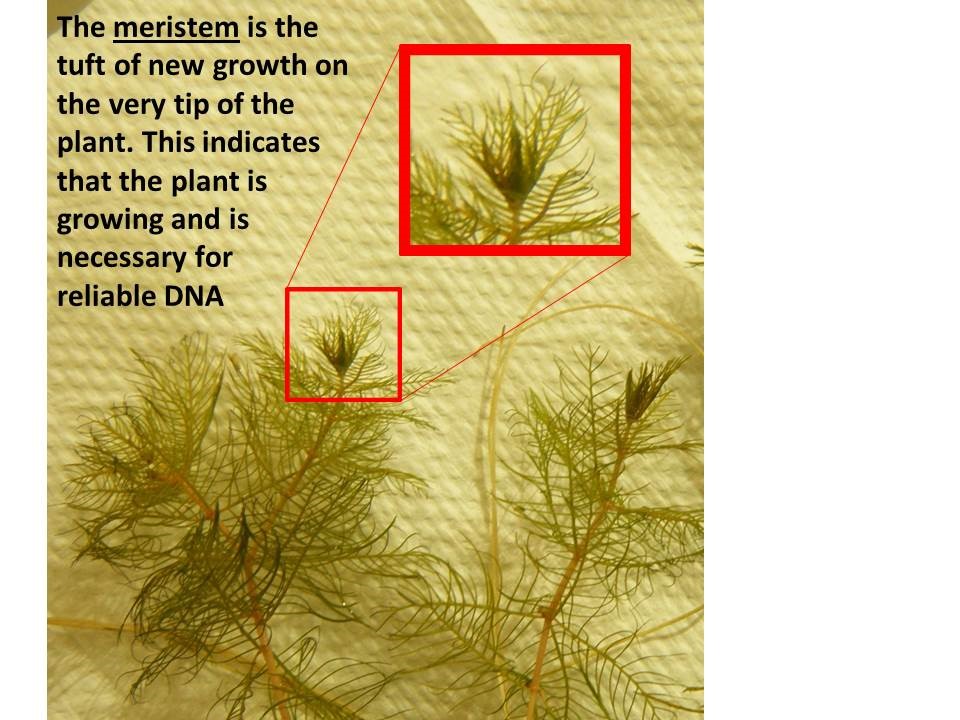
- Shake off, or gently brush off, any debris or algae using gentle agitation in water to make sure the meristem is clean.
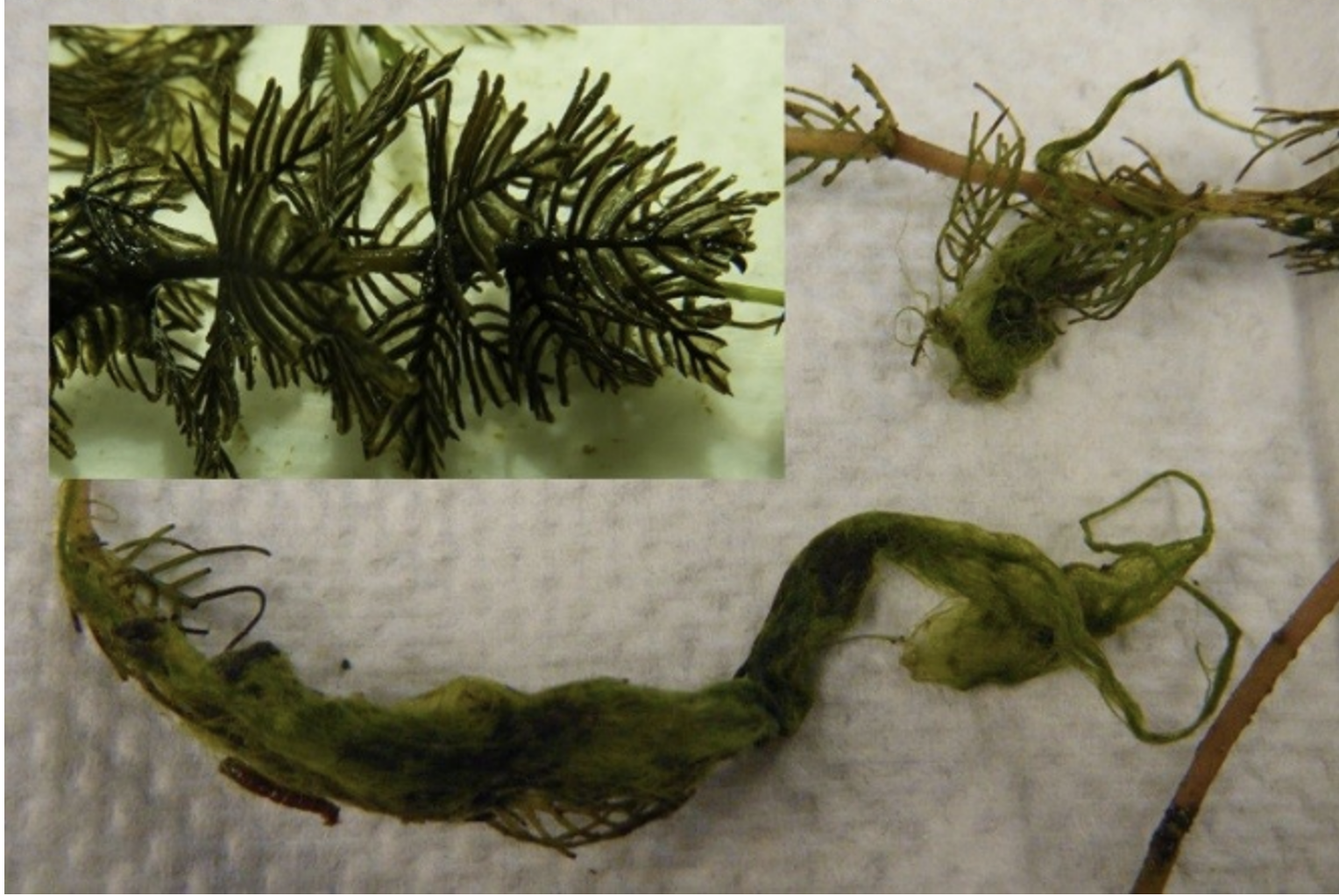
-
- IMPORTANT: DNA from any other algae or debris cannot be rinsed off after the plants are dry and will contaminate the sample when they are processed.
- Avoid sampling plants without meristems, plants with flowering spikes, and meristems from the same plant (i.e., connected by branches).
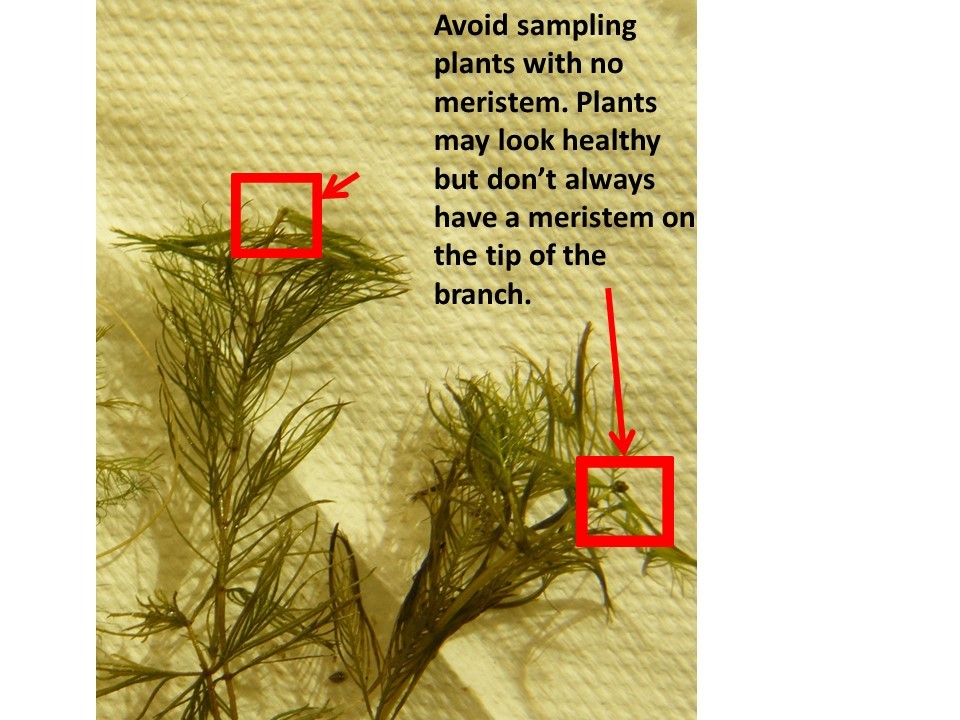
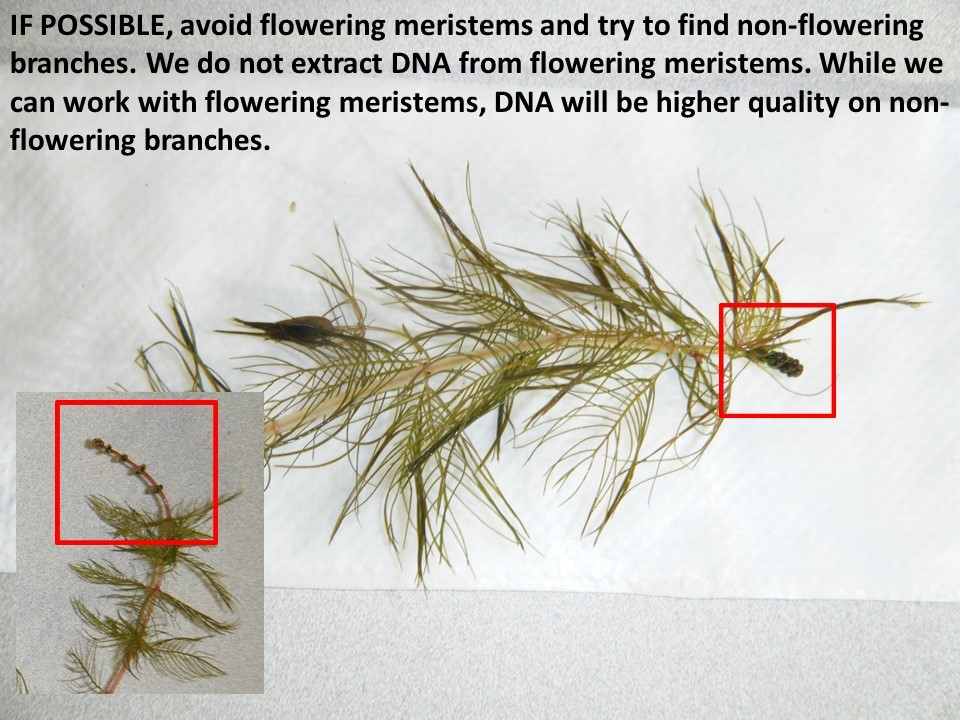
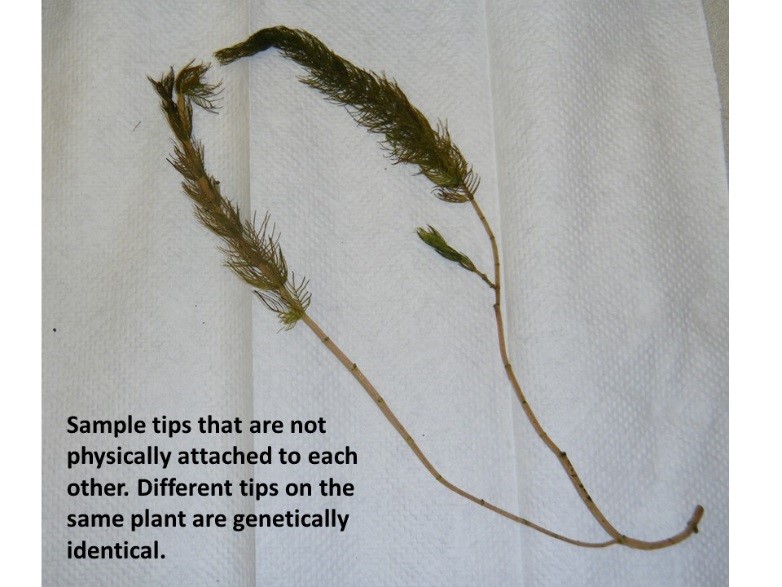
- Blot plants dry using paper towel.
- IMPORTANT: Blotting plants dry removes excess water and helps keep silica beads from becoming saturated too quickly.
- Place ONE plant stem individually into a 3 1/8” x 5 1/2” paper envelope being sure
that the tips are clear of the rest of the stem.
- IMPORTANT: It is critical that you only include one plant tip per rake toss. And, rake tosses should be spread out across the lake. Please consult with Ashley on sampling strategy (see note above).
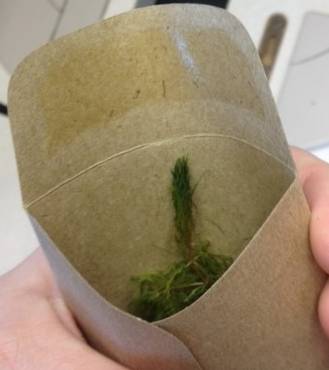
- Seal the envelopes.
- IMPORTANT: DO NOT PUT SILICA BEADS DIRECTLY IN THE PAPER ENVELOPE WITH THE PLANT. It is critical that silica beads should never come in direct contact with the plant tissue. They will damage the plant tissue and contaminate the beads eliminating chances for re-use.
- Label envelope with:
Lake name
County
Location within the lake
Unique sample identifier (could be numbers 1-x for each sample collected)
-
- IMPORTANT: Be sure to also fill out an electronic version of the Chain of Custody form. We will send this to you before or after our sampling strategy consulting meeting. It is critical that we have this information for an accurate database. We are unable to process any samples sent to us until we have all of the information from the Chain of Custody form.
- Place each envelope into a provided plastic bag.
- IMPORTANT: Only one plant per envelope, and one envelope per bag.
- IMPORTANT: Keep the envelope and plastic bag as dry as possible during this procedure to avoid saturating the silica beads too quickly.
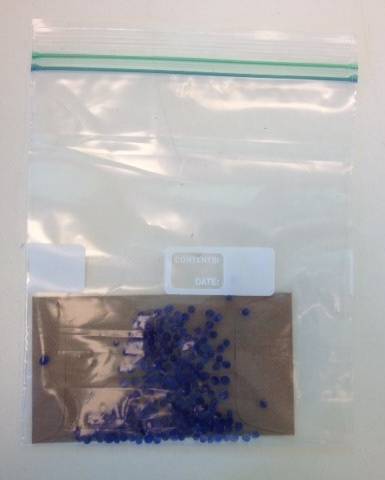
- Force as much air as possible out of the Ziploc bags before sealing them.
- IMPORTANT: Removing the air will make it possible to store more bags in one container, and prevent the beads from saturating.
- Place all bags into the provided plastic container with ~1 inch of silica beads on
bottom.
- IMPORTANT: This is an extra measure to ensure that the plant will not rehydrate during storage.
- Check silica beads for saturation after 24 and 48 hours for newly dried plants and
then every 3 or 4 days afterwards (this is especially important when adding new samples
to the box). PLEASE SEE “IMPORTANT NOTE 1.”
- Silica beads should be replaced in any bag that has greater than 50% saturation (more than 50% of the color changing beads have changed color).
- Samples can be stored in the watertight container at room temperature for 2-3 months. If it is unlikely that beads can be checked on a regular basis, plants should be sent in for ID as soon as they are dry, rather than waiting the maximum 2 months.
Sample Shipping
Please send dried plants to:
Ashley Wolfe
Montana State University
Department of Plant Sciences and Plant Pathology
119 Plant Bioscience Building
Bozeman, MT 59717-3150
